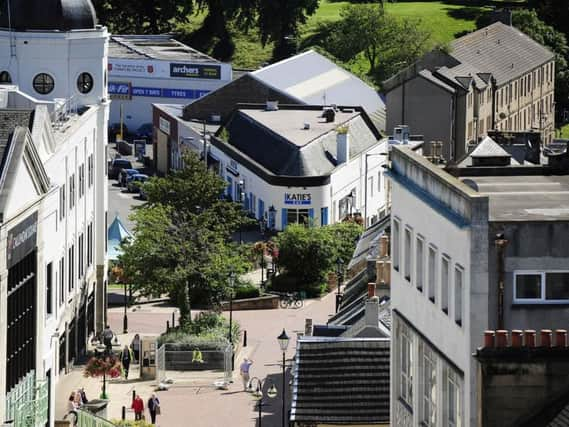More people living on Scotland's high streets than anywhere else in UK


The joint report by the Office for National Statistics and Ordnance Survey, the national mapping agency found that 58.7 per cent of high street addresses are homes north of the border - the highest level outside of London.
However, a smaller proportion of Scotland's population lives close to a local high street, compared to the rest of the UK at just 13 per cent, compared to 38 per cent in London. Scotland also saw higher population growth near its high streets, with the number of people living nearby rising by 3.7 per cent, compared to 1.9 per cent away from major retail hubs.
Advertisement
Hide AdAdvertisement
Hide AdMeanwhile, the figures showed that retail jobs on Scotland’s high streets fell 8.6 per cent over the period 2012 to 2017. Scotland recorded the second worst performance on retail jobs of the eleven nations and regions surveyed, after Wales.
The figures reflect a stronger movement in Scotland to move away from reliance on retail, first mooted by Malcom Fraser's town centres review in 2013, which called on councils to bring people back in to Scotland's town centres - as well as opening up vacant retail premises to create more of a mix of retail, leisure and business facilities.
The analysis is based on almost 7,000 unique high streets identified by Ordnance Survey, with 457 in Scotland.
The longest high street in Scotland is Dumbarton Road in Glasgow at 1,706 metres, while UK-wide the longest is London Road in Southend-on-Sea, at 2,983 metres.
Between 2012 and 2017 the number of retail businesses on the high street fell by two per cent UK-wide, while those not based on the high street grew by six per cent. The number of high street retail jobs fell in every GB region except London over this period.
The most popular name for British high streets is, perhaps unsurprisingly, "High Street" - the official name for Edinburgh's Royal Mile - while Market Place and Market Street come and close second and third. Other popular names for a town's main retail street are Station Road, London Road and Church Street.
Leigh Sparks, professor of retail studies at Stirling University and chair of Scotland's Towns Partnership, said: "Having this data is something we have been asking for for a long time - it bring up all kinds of interesting stuff and allows us to ask the right questions.
"It shows that the number of retail outlets is declining and that companies are adjusting to the new realities of commerce."
Advertisement
Hide AdAdvertisement
Hide AdHe questioned whether the data, which focuses on properties within 200 metres of a high street, could be skewed by a large number of small Scottish towns such as Aberfeldy, which are focused around a high street.
He said: "However, if high streets are shown to be more residential in Scotland, it shows we have started to move in the right direction - it is a good thing. It is about having people and having liveliness and footfall, which in turn means spend."
David Lonsdale, director of the Scottish Retail Consortium, said: “We have consistently said retail is going through a period of profound change and reinvention as retailers adapt to new technology, changing consumer behaviour, squeezed household finances, and rising costs. Despite all of this we are convinced retailers will continue to have a strong physical presence on thriving and attractive high streets, but less so than is the case now."
